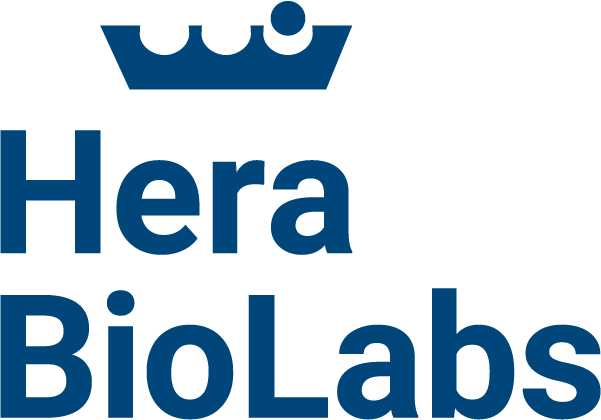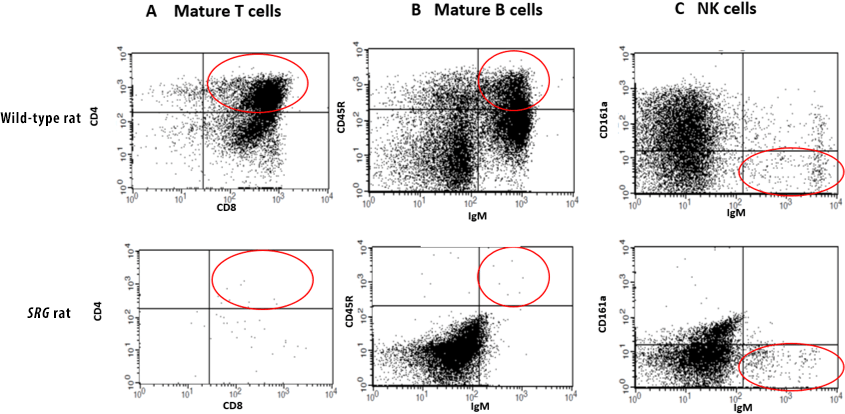The SRG rat is a SCID model created through knockout mutations in the Rag2 and Il2rgamma genes that result in a loss of mature B, T, and NK cells. the SRG Rat has an immunodeficient phenotype ideal for the engraftment of human tissue.
Taking advantage of the Sprague Dawley background and the larger organism size, SRG users have found our rats uniquely optimal for combining efficacy, pharmacokinetic (PK), biomarker, and toxicology related endpoints.
Get the most out of the SRG Rat model by leveraging our preclinical oncology expertise. In the hands of our seasoned researchers, the rat can deliver robust data, faster.
What’s Unique About The SRG Rat Model?
We wield and sell disruptive biotechnology like the SRG OncoRat and gene editing technologies like Cas-CLOVER and piggyBac to efficiently and accurately run and enable contracted drug testing, drug discovery and development, chemical toxicity testing, and xenograft studies.
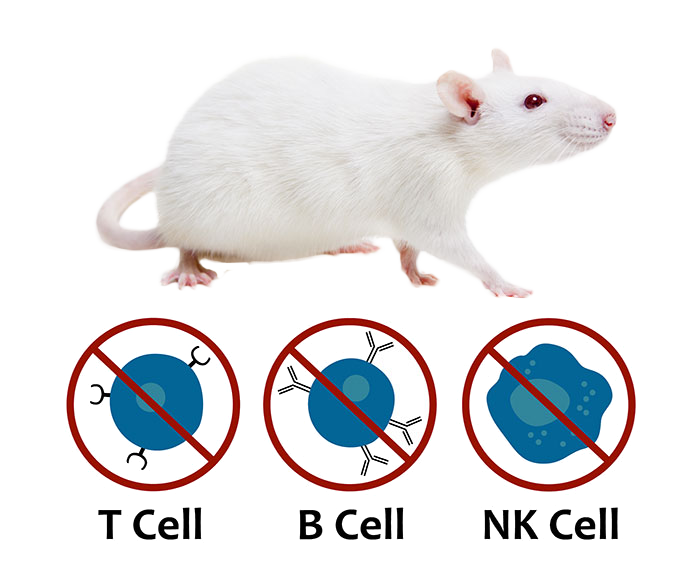
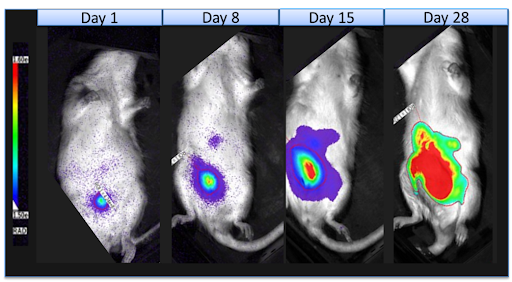
Xenograft & PDX Studies
Hera provides in vivo oncology studies in our SRG rat in wide variety of xenograft and PDX tumor models. Learn more about why researchers prefer our SRG rat over traditional mouse models.
Or request more information about our capabilities and expansive xenograft portfolio. Let our team of expert scientists advise on the selecting the perfect preclinical drug efficacy testing strategy.

Exclusive SRG Distribution Partnership
Hera has partnered with Charles River for the distribution of the SRG rat to the directly to the global research community. Now all rat orders will be placed with and fulfilled by Charles River.
Validated Using Difficult Xenograft and Patient Derived Xenograft (PDX) Models
The SRG Rat has been validated using a wide range of xenografts that consistently demonstrate high tumor take rates with traditionally difficult to engraft cell lines, such as VCaP prostate cancer, H358 non-small cell lung cancer (NSCLC), and prostate, NSCLC, and ovarian PDX models.
Additionally, humane endpoints allow for subcutaneously implanted xenograft and PDX models to reach 10X tumor volumes, up to >20,000 mm3, compared to mouse xenografts allowing for serial tumor sampling or faster PDX establishment.
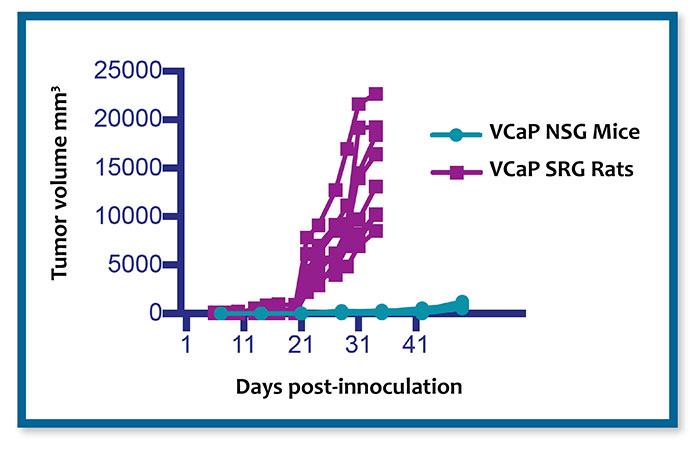

How Is The SRG Rat Better Than SCID Mice?
Through the use of the SRG Rat, researchers can collect more consistent, higher quality data that provides advantages for predicting success in the clinic.
Xenografts in the larger SRG Rat models can display vastly improved engraftment efficiencies, tumor size, growth, and tumor morphology across a number of human cancer cell lines and patient-derived tissues that are either not permissive or extremely inefficient in mice.
An added benefit is the ability of the rat to achieve more human-like physiologic and metabolic traits versus mice.
Cancer Researchers Find Success With
SRG Rat Models
SRG Rat Models
A team of researchers led by Dr. Ramesh Narayanan at the University of Tennessee partnered with Hera BioLabs to evaluate new therapeutics for castration-resistant prostate cancer (CRPC), targeting androgen receptors (ARs).
Given the need for prostate cancer xenografts which model high AR-expression amplification phenotype found in many CRPC patients, the SRG rat has high tumor take rates of prostate cancer xenograft cell lines such as LNCaP & VCaP (>90%) which are prohibitively inefficient in mouse. Hera has expanded our capabilities to include validated castration-resistant and enzalutamide-resistant models.
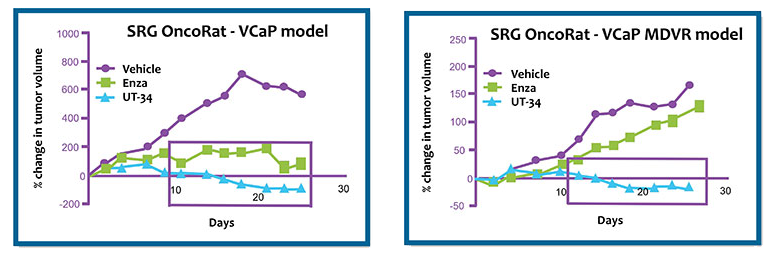

Learn More By Downloading Our Case Study
“The tumor uptake rate was to 80-100%, which is a huge advantage because what we could achieve as a statistical significance with 8-12 mice, can be achieved with 5-6 OncoRats.”
-Ramesh Narayanan, Ph.D.
Associate Professor of Medicine & Hematology
University of Tennessee Health Science Center
Analysis Of Immune Populations In SRG Rats
- A) CD4+/CD8+ mature T cells are absent.
- B) The spleen contains no mature B cells as demonstrated by lack of CD45R (B220)+/IgM+ cells.
- C) The Il2rg knockout results in a reduced NK cell population in the spleen.
Comparison between Nude rats and the SRG rat show a severally reduced number of natural killer (NK) cells in the circulating blood.
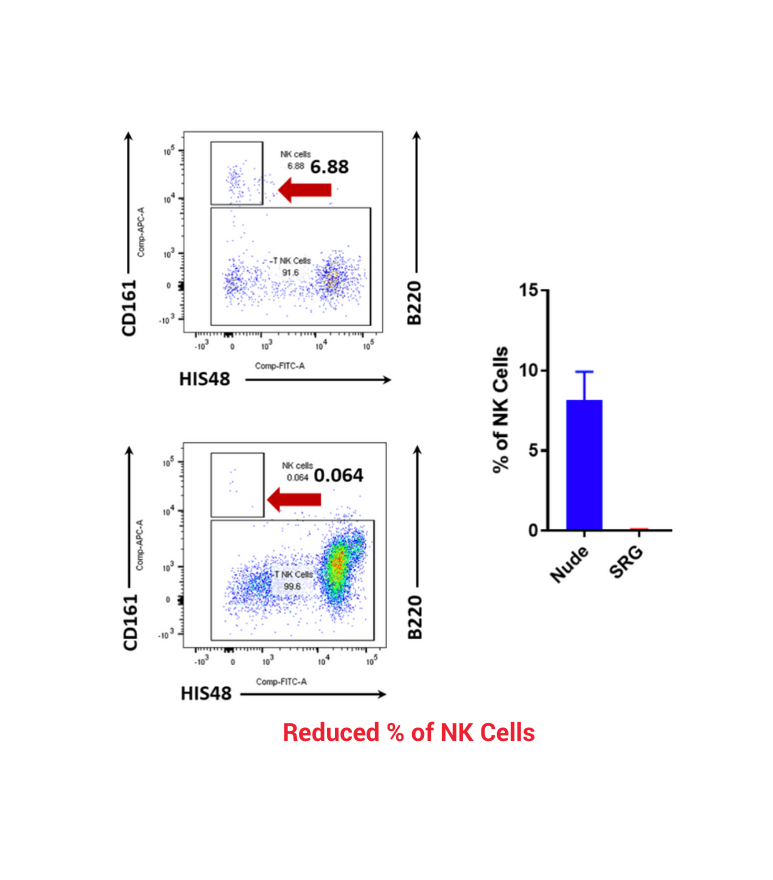
Additional Resources
The SRG Platform can also be reconstituted with human immune cells such as PBMCs to produce humanized rats, the ImmunoRat™ – is in development for immune-oncology studies and in pharmacology and toxicology with a humanized hepatocyte SRG Model – HepatoRat™.. Hera and its collaborators continue to develop additional applications of the SRG Platform. Please contact us if you have questions about applications outside of oncology and immune-oncology.
Frequently Asked Questions
We have compiled answers to frequent questions about our novel SRG OncoRat®. If you still have questions, feel free to contact us.
